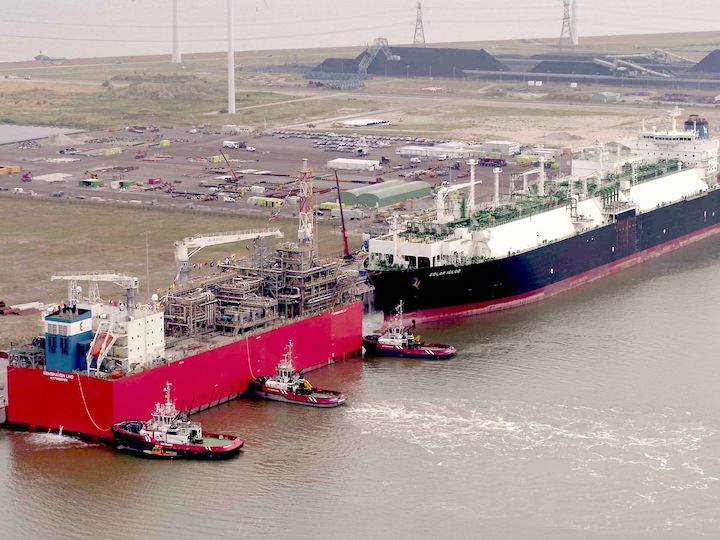Two floating liquefied natural gas terminals are setting up in a Dutch port, the first in a wave of the specialist tankers that Europe is banking on to ease the worst energy crunch in decades.
The Golar Igloo and the Eemshaven LNG are currently berthed together in the northern seaport of Eemshaven. Both are floating storage and regasification units, or FSRUs, designed to convert the super-chilled fuel transported on seagoing vessels into gas that can be pumped into onshore networks.
The ships’ arrival before winter will be crucial in helping Europe through a deepening fuel crisis after Russia slashed gas deliveries in retaliation for sanctions imposed over its invasion of Ukraine. Soaring energy prices have pushed economies to the brink of recession, forcing governments to fast-track the use of floating gas terminals that take a fraction of the time to set up than their onshore versions.
The vessels’ popularity is spreading. Germany, which used to get more than a half of its gas via pipelines from Russia, is now chartering five FSRUs through the government and two more that will be privately rented. Three of the ships are slated to start this winter. Italy, France and the Baltic countries are also planning or investigating floating terminals to import LNG.

In Eemshaven, a deepwater port on the northeast tip of the Netherlands, a so-called commissioning LNG cargo will be delivered Thursday to prepare the facility for its first commercial shipment in mid-September. Both of the FSRUs are rented for five years, and together are called EemsEnergyTerminal, which is expected to receive, unload and ship about 18 LNG cargoes by Dec. 31.
The LNG tanker Murex, loaded at Cheniere Energy Inc.’s Sabine Pass terminal on the US Gulf Coast, is outside the new terminal, signaling the pending first delivery to the facility, ship-tracking data on Bloomberg show. The US has channeled record volumes of LNG -- pitched as “freedom gas” by the Trump administration -- to the continent this year.
FSRUs are typically moored permanently near shore. An arriving carrier then transfers LNG to the unit, which stores and turns the cargo into high-pressure gas. The vessels tend to be faster, cheaper and more environmentally-friendly to develop compared to an onshore solution, though their capacity is much lower.
As more LNG production plants come on stream by the middle of the decade, more facilities to convert cargoes into gas are expected, with 20 new terminals proposed for continental Europe, according to Helge Haugane, a senior vice president for gas and power at Equinor ASA.
“If these come up quickly, if the governments are able to reduce the red tape, then things will look much brighter in 2026-2027 even without Russian volumes,” Haugane said in an interview at the Gastech industry conference in Milan.

Follow us on social media: